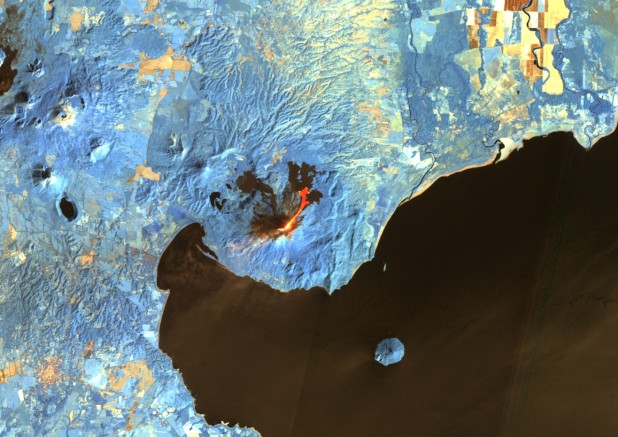Momotombo Is Erupting
The people of El Papalonal woke up on Monday evening to Momotombo, a local stratovolcano located at the edge of Lake Managua, erupting for the first time in 110 years. Momotombo destroyed the Spanish city of León in 1610, but has been lying dormant since 1905. León was moved to the west of the mountain, about 30 miles from where it is now. Between 1849 and 1905 Momotombo had ten eruptions, before dying down for another 110 years.
Momotombo is located near the El Papalonal community in La Paz Centro, in León, Nicaragua, Central America. On Tuesday the 2nd December gas and ash could be seen coming out of the mountain and on Wednesday glowing lava started flowing from the crater of the volcano. The mountain’s peak reaches a height of 1,297 metres.
The lava and spewing ash was shot thousands of metres into the air; onlookers were saying that it reached a height of 300 m to 1 km. Explosions were taking place every four seconds within the crater, according to volcanic experts. On the north side of the mountain you can now see the lava flowing down, indenting a path into the mountain side.
Some of the debris rained down on nearby communities, but fortunately no injuries were caused. The Nicaraguan authorities has beaconed off a barrier of six-kilometres to protect the closest communities and villages to the mountain, who has said that they are feeling a bit apprehensive about the Momotombo’s sudden eruption last week.
Media in Nicaragua interviewed local residents, who are seeing the volcano erupting and active for the first time. Some residents have reported to the media that “the volcano has been rumbling and ash and dust has been falling” on them. They felt the tremors and started noticing steam plumes a few weeks ago, before volcanic debris started erupting from the mountain late Monday night. Schools have closed for the moment.
The crater is estimated to be 150 x 250 metres wide at its summit and the cone less than 4,500 years old. The fumaroles are emitting sulphurous gases and steam at very high temperatures. There is a major geothermal field located on the southern flank of the volcano that has been heating up the earth on that side of the mountain.
The INETER (a relevant scientific and technical body of the Nicaragua state who monitors dangerous phenomena) webcam spotted a strong steam plume of 300 metres on Tuesday morning. The Advanced Land Imager (ALI) on NASA’s Earth Observing 1 spacecraft took infrared pictures like this one above of the spewing volcano on the 4th December.
Even though there has been nothing coming from the Momotombo like in the last week, over the last decade there has been seismic activity whenever the magma moved underneath the volcano. Water within the summit had been heating up since 2007 because of the magma’s activity, making an eruption inevitable.
Central America is known for volcano activity. In the last week there have been other volcano eruptions. In Guatemala the volcanoes Fuego and Santiaguito had moderate eruptions with a lava fountain coming from Fuego. NASA also reported spotting Telica, another Nicaragua volcano, in November showing a small ash smokestack. All these volcanoes are lying on the Cocos Plate, an oceanic tectonic plate sub ducting beneath the Caribbean Plate and Pacific Ocean.
For the moment the volcano will be watch and monitored by the National System for the Prevention, Mitigation, and Observation of Disasters in Central America.









